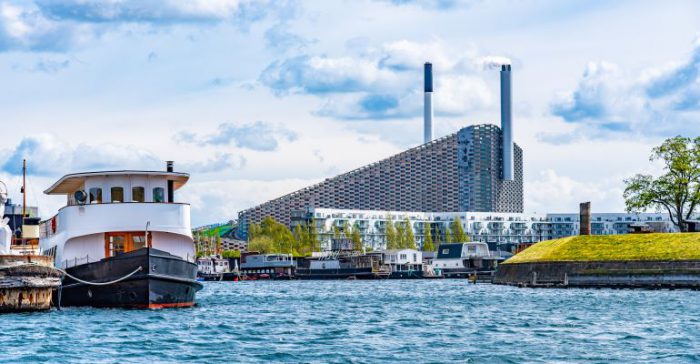Taylor Patterson, 2/3/2021.
The clean energy and technology industry thrives on innovation to provide sustainable solutions to some of the world’s biggest efficiency problems. Amager Bakke, a waste-to-energy plant operating in Copenhagen, Denmark, is the epitome of this outside-the-box thinking.
Construction of this 4.4-million-square-foot facility began back in 2013 and was completed in 2017, replacing a 45-year-old incineration plant. A full-functioning year of operations at Amagar Bakke converted 440,000 tons of solid waste into enough clean energy to heat 72,000 local homes and provide electricity to another 30,000.
Beyond its remarkable clean energy operations, Amager Bakke has drawn significant media attention for its exterior design and interaction. The architecture of the building features a large, sloped roof, which has been transformed into a ski slope. Yes, you read that right – the roof is a recreational ski slope. The trailblazing facility, referred to as “CopenHill,” also features a smaller rooftop slope for tubing in addition to the world’s largest climbing wall, which stretches 279 feet up one of the building’s side facades. Beyond these flashy attractions, CopenHill hosts incredible views of the city, running and walking trails, cafes, bars, and many other interactive activities.
The facility’s recreational exterior comes at a time when outdoor fun is trending as a result of the Coronavirus pandemic. This coincidental timing drew more attention to the plant than was originally anticipated. Although Amager Bakke attracted tourists before global travel restrictions, it has since been a local hotspot for city residents to participate in outdoor activities while maintaining a safe distance from others.
Archpaper.com recently released new photographs of the Danish plant that display its large presence, unique architecture, and attention-grabbing features.

